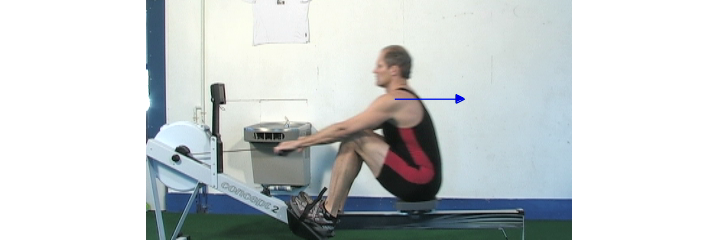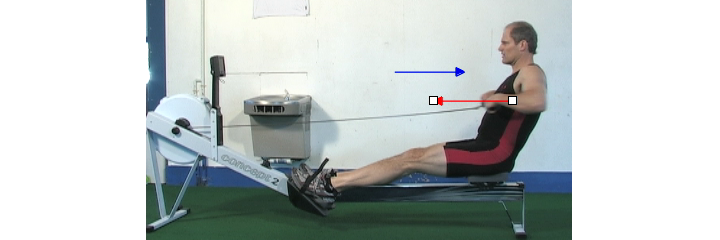Proper “Core” Exercises can get you Back on the Erg, Pain-free! Rowing News Article
January 20, 2011
Indoor rowing can be a pain in the back. But it’s nothing that better core strength can’t fix.
By Robert Kaehler
“Because there is no change of direction on the ergometer, your muscular system is responsible for 100 percent of the energy that is required to change direction.”
One of the greatest things about rowing outdoors is hearing and feeling the water rushing beneath you on the recovery. The sudden increase in speed at the release is one of the most incredible and addictive sensations in our sport. There is none of this on the erg. Your trunk is dead weight every stroke—you stop the momentum into the bow, restart it as you head back to the catch, and repeat ad nauseum. Because there is no change of direction on the ergometer, your muscular system is responsible for 100 percent of the energy that is required to change direction from the finish to the recovery. On the water, that number is lower depending on how well you suspend your body weight through the drive and at the finish. The better your suspension, the less stress you place on your body. But the erg is the “truth teller.” It shows who has the internal tools (muscular strength) to handle the stress of the erg, and who does not, which manifests itself in lower-back pain.
Identifying your specific strength and flexibility deficits is best done in a one-on-one evaluation. However, there are several exercises you can do that can improve the strength you need to tolerate training on a standard erg. These include exercises that target the abdominal muscles and hamstrings and that strengthen the hip-flexion motion. You can improve abdominal strength by lying flat on your back with your legs straight, and then simply moving the trunk to an upright position (90 degrees or vertical). When your trunk is 45 degrees off the floor, try to place your low back in a straight position. You can change the intensity of this exercise by changing your hand and arm positions: having you arms reaching toward your toes is easiest; having them crossed behind your head is the most challenging. Once you can do 30 repetitions at the hardest level, start adding weight to the exercise.
You can improve hamstring strength with exercises known as bridges. Start by lying on your back with your knees bent and your feet flat on the floor, then raise your hips up off the floor in an effort to create a straight line with your shoulders, hips, and knees. Try holding this position for up to 10 seconds and then repeat up to 30 times. Make sure you keep your low back stable; if you experience stress in that area you are not engaging your supporting muscles correctly. Stop and seek proper instruction if that is the case.
If the bridges seem too easy, increase the degree of difficulty by placing your feet atop an exercise ball. You can perform the hip-flexion motion while on your back with your arms extended and secured to a solid object. Proceed by pulling your knees toward your elbows. When you do so, your trunk will curl up while your knees bend toward the chest. Once you are able to perform 30 repetitions of this exercise, you can either add weight to your ankles or try the same motion while hanging from a pull-up bar. Reducing stress on the passive tissue (discs and ligaments) of the low back while training on an ergometer is key to remaining healthy during training, and improving your trunk strength is the best way to achieve it.

Increasing Body Momentum - Drive

Muscular System Must Provide 100% Effort for Change of Direction - Standard Erg
